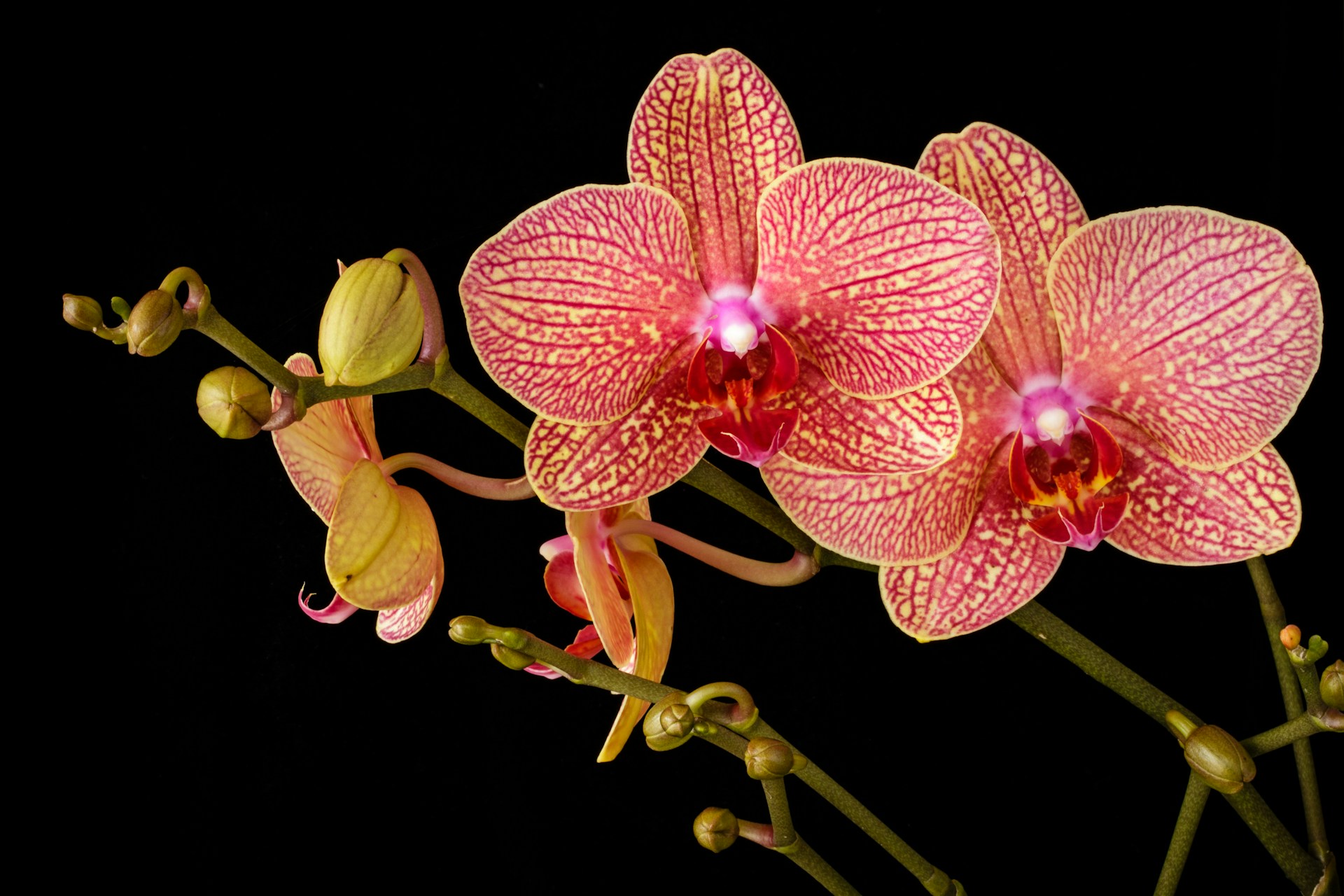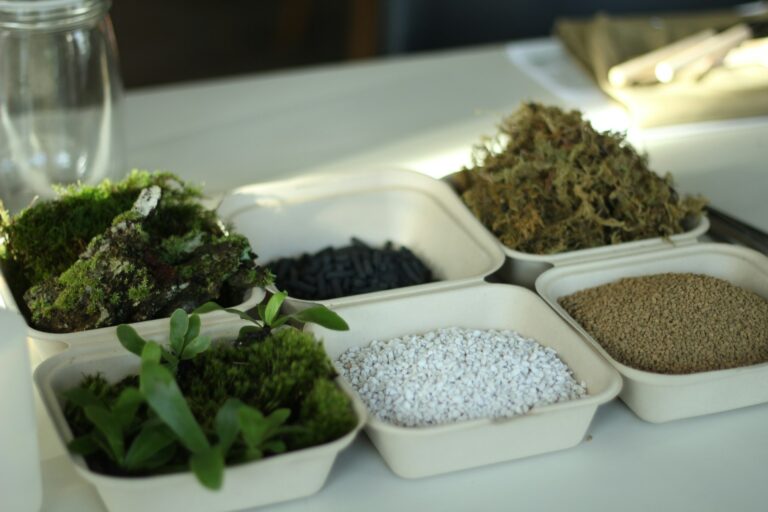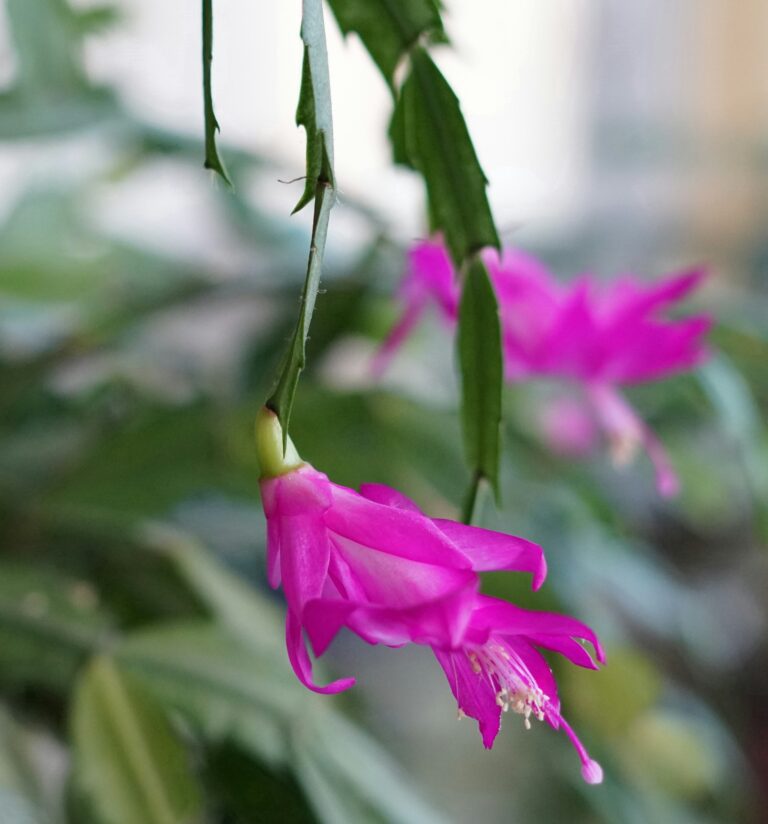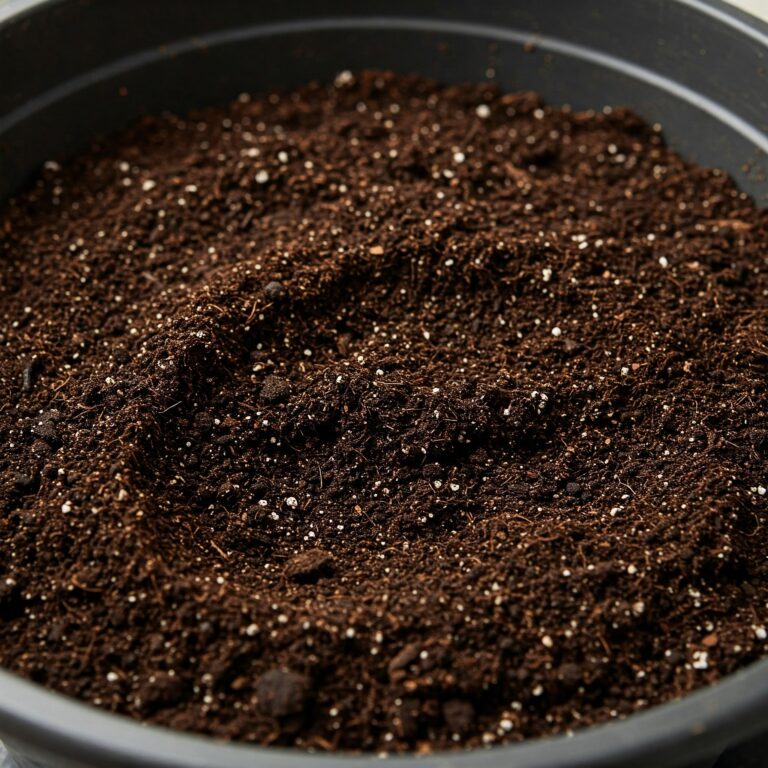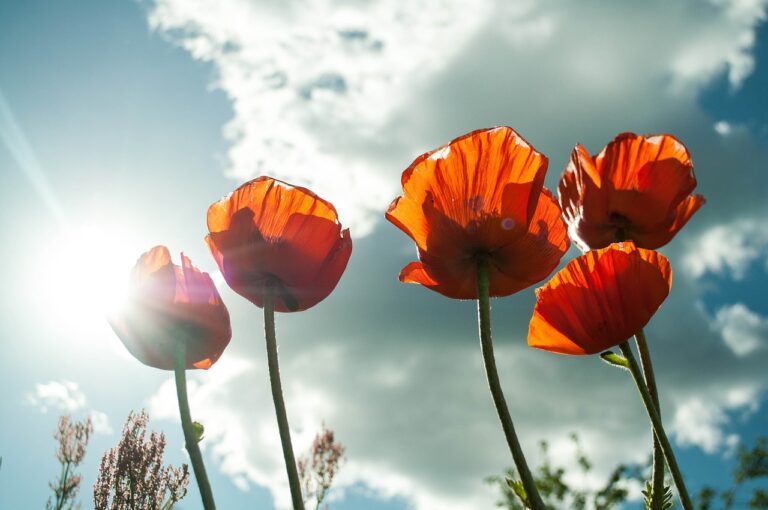Vanda orchids, renowned for their vibrant and captivating blooms, have long been prized by orchid enthusiasts and collectors alike. These tropical epiphytes, native to Southeast Asia, are known for their hardy nature and ability to thrive in diverse climates.
However, despite their resilience, Vanda orchids are not immune to certain challenges that can manifest as yellowing leaves. Yellow leaves on Vanda orchid plants can cause concern among orchid enthusiasts, as they may indicate underlying issues affecting the plant’s overall health.
So, what’s causing these yellow leaves? The common causes are overwatering, underwatering, natural aging, nutrient deficiency, improper lighting, and temperature changes. Some problems are easy to identify, from how leaves turn yellow, and others require up-close plant inspection. You must know what you are looking for when inspecting the plant.
In this discussion, we will explore the possible causes of orchid leaves turning yellow and discuss effective strategies for addressing this problem, ensuring that these magnificent plants continue to flourish and delight with their stunning blooms.
What causes yellow leaves on vanda orchid plants?
Here are the major causes of yellow leaves on Vanda orchid plants. Always confirm between the causes to ensure you care for your plant correctly.
Natural aging
One of the common reasons for yellow leaves on Vanda orchid plants is natural aging. Like all living organisms, Vanda orchids undergo a natural life cycle, including growth, flowering, and eventual decline. As the orchid plant ages, its leaves may show signs of yellowing.
As Vanda orchids mature, the older leaves that are closer to the base of the plant gradually age and naturally senesce. The natural aging process and leaf senescence are normal parts of the orchid’s life cycle.
It is important to distinguish between naturally yellowing leaves and those affected by other factors, such as diseases or nutrient deficiencies. Typically, only the lower leaves of the Vanda orchid will turn yellow as part of this natural process, while the newer leaves toward the top of the plant should remain healthy and green.
Also, if the yellow leaves are accompanied by other symptoms such as wilting, spotting, or unusual growth patterns, it could indicate an underlying problem that needs to be addressed.
While leaves turning yellow due to natural aging are unavoidable, you can help delay this process by providing optimal growing conditions, including appropriate light, temperature, humidity, and regular fertilization.
Overwatering
Overwatering is a common mistake gardeners make and can harm the health of Vanda orchid plants. Excessive moisture in the growing medium can lead to various problems, including yellow leaves.
When Vanda orchids are consistently overwatered, the roots become saturated with water, leading to poor oxygen circulation and the development of root rot.
As a result, the plant’s ability to take up essential nutrients is compromised, leading to nutrient deficiencies. One of the early signs of nutrient deficiencies is the yellowing of leaves.
Additionally, overwatering creates a favorable environment for fungal and bacterial pathogens to thrive. These pathogens can infect the roots and cause root rot, further impairing the plant’s ability to absorb nutrients.
Establish a proper watering routine to prevent yellow leaves on vanda orchids caused by overwatering. These epiphytic plants prefer a drier environment and have specialized aerial roots that require air circulation. Allow the growing medium to dry out slightly between waterings to ensure the roots have access to oxygen.
When watering, it is important to provide a thorough soak, allowing water to fully penetrate the growing medium and then allowing excess water to drain out completely.
Underwatering.
While overwatering can lead to yellow leaves in Vanda orchid plants, underwatering is another common issue that can cause similar symptoms. Insufficient watering can stress the plant and result in yellow leaves, signaling the need to adjust watering practices.
When Vanda orchids are underwatered, the lack of moisture in the growing medium can hinder the plant’s ability to absorb water and essential nutrients.
Furthermore, underwatering can lead to the accumulation of salt and mineral deposits in the growing medium. As water evaporates from the medium, these deposits become more concentrated, potentially causing nutrient imbalances and hindering nutrient uptake. The inadequate supply of essential nutrients can contribute to the development of yellow leaves on Vanda orchid plants.
To prevent the yellowing of leaves due to underwatering, establish an appropriate watering routine for Vanda orchid plants. Understand the plant’s specific moisture requirements. Vanda orchids are epiphytic plants that prefer a slightly drier environment but still require regular watering.
Regularly check the moisture level in the growing medium by inserting a finger or a moisture meter into the substrate. Water the plant thoroughly when the top layer of the growing medium feels dry. Ensure the water reaches the roots by allowing it to flow through the medium and drain out completely.
Which Cheap LED Grow Lights Are Best For Vegetables
Poor lighting conditions.
Proper lighting is essential for Vanda orchid plants’ healthy growth and development. Improper lighting conditions can significantly impact their overall health, leading to various issues shown through leaves turning yellow.
Vanda orchids are epiphytic plants that naturally grow in bright, indirect sunlight in their native habitats. When grown indoors or in environments with inadequate lighting, they may not receive the optimal amount of light they need for photosynthesis and overall vitality.
Inadequate lighting can also disrupt the balance between light and temperature, leading to imbalances in the plant’s metabolic processes. This imbalance can interfere with nutrient uptake and utilization, further contributing to the development of yellow leaves.
Furthermore, poor lighting conditions can lead to leggy growth and weak stems in Vanda orchids. The plant may elongate and stretch towards a light source in an attempt to maximize light absorption. As a result, the plant’s energy is focused on elongation rather than leaf production, leading to sparse foliage and yellowing leaves.
Ideally, place the plant in a location that receives bright, indirect sunlight. Supplemental artificial lighting, such as fluorescent or LED grow lights, can be used if natural light is insufficient.
When using artificial lighting, it is important to position the lights at an appropriate distance from the plant to ensure they receive the right intensity without causing damage. The duration of light exposure should also mimic natural day-night cycles, with approximately 10 to 12 hours of light per day.
Adjusting the lighting conditions and providing the necessary light intensity can help the plant regain its vigor and prevent further yellowing of leaves.
Nutrient deficiency.
When these orchids lack essential nutrients or experience imbalances in nutrient availability, it can cause the leaves to turn yellow.
Nutrient deficiency occurs when the orchid cannot absorb an adequate amount of one or more essential nutrients necessary for its optimal growth. One of the primary nutrients that can contribute to yellow leaves is nitrogen.
Nitrogen helps in chlorophyll synthesis, which gives leaves their green color. When Vanda orchids suffer from nitrogen deficiency, their leaves may turn pale or yellow due to decreased chlorophyll production.
Other essential nutrients such as iron, magnesium, and manganese also play key roles in chlorophyll production and overall plant health. Iron deficiency, for example, can cause interveinal chlorosis, where the tissue between leaf veins turns yellow while the veins remain green.
Always provide the plant with balanced and appropriate fertilizers. Orchid fertilizers specifically formulated for orchids can help supply essential nutrients in the right proportions. Follow the instructions on the fertilizer package to ensure you use the correct amount.
In some cases, if nutrient deficiencies persist despite appropriate fertilization, it may be necessary to adjust the pH of the growing medium. pH levels outside the optimal range can affect nutrient availability and uptake by the plant.
Change in temperatures.
Vanda orchid plants are highly sensitive to temperature fluctuations, and abrupt changes can significantly impact their health and appearance. Extreme temperature shifts, and sudden exposure to cold or heat stress, can lead to yellow leaves in Vanda orchids.
Cold Stress:
Exposure to low temperatures can cause cellular damage in Vanda orchids, leading to yellowing and browning of leaves. Cold stress disrupts the plant’s metabolic processes, including nutrient uptake and photosynthesis.
As a result, chlorophyll production may decrease, leading to the leaves’ pale or yellow appearance. In severe cases, cold stress can also cause tissue damage and necrosis, resulting in the browning or blackening of leaves.
Heat Stress:
High temperatures can also negatively affect Vanda orchids, especially if the plants are exposed to prolonged periods of extreme heat. Heat stress can lead to excessive transpiration, causing the plant to lose more water than it can uptake.
This can result in dehydration and nutrient imbalances, ultimately leading to yellowing or wilting of leaves. High temperatures can also impair the plant’s ability to carry out vital physiological processes, such as photosynthesis.
Temperature Fluctuations:
Even rapid shifts between hot and cold temperatures can stress Vanda orchids and impact leaf health. These fluctuations can disrupt the plant’s metabolic processes, causing physiological stress and affecting nutrient absorption. As a response to these stressors, leaves may turn yellow or show signs of damage.
To mitigate the negative effects of temperature changes and prevent yellow leaves in Vanda orchid plants, create a stable and suitable growing environment. This includes providing consistent temperature levels within the orchid’s preferred range.
Vanda orchids generally thrive in temperatures between 65°F (18°C) and 85°F (29°C) during the day, with a slight drop at night.
To protect Vanda orchids from cold stress, avoid exposure to temperatures below 60°F (15°C) for extended periods. During colder months, provide supplemental heating or relocate the orchids to warmer areas, such as a greenhouse or an indoor environment with controlled temperature.
What to do if your vanda orchid roots are rotting?
If you notice that the roots of your Vanda orchid are rotting, it is crucial to take immediate action to prevent further damage and save the plant.
Here are steps you can take to address root rot in Vanda orchids:
- Carefully examine the roots to determine the severity of the rot. Healthy roots should be firm, white, or greenish in color. Rotted roots will appear brown or black, soft, and mushy. If a significant portion of the roots is affected, it may be challenging to save the plant.
- Using sterilized scissors or pruners, carefully trim away the rotted roots. Cut above the affected areas, removing only the unhealthy portions. Be cautious not to damage any healthy roots during the process.
- After each cut, disinfect the tools with rubbing alcohol or a diluted bleach solution to prevent the spread of any potential pathogens.
- After removing the affected roots, allow the remaining healthy roots to dry out before repotting. This step helps prevent further rotting and promotes the development of new healthy roots.
- Choose a clean and suitable pot with good drainage. Prepare a fresh orchid-specific potting mix or a mixture of coarse bark, sphagnum moss, and other well-draining materials. Place the orchid in the new pot, properly positioning the remaining healthy roots. Avoid burying the orchid too deeply or packing the growing medium too tightly.
- After repotting, provide the orchid with optimal growing conditions. This includes providing adequate light, temperature, and humidity levels. Ensure proper watering practices, allowing the growing medium to partially dry out between waterings to prevent future overwatering and root rot.
- If the root rot is severe or you suspect fungal or bacterial pathogens, you may consider applying a suitable fungicide or bactericide to the remaining healthy roots. Follow the product instructions carefully and use it sparingly to avoid harming the plant.
Remember, prevention is key to avoiding root rot in Vanda orchids. Ensure proper drainage, use a well-draining potting mix, and avoid overwatering. Proper care and attention will help your Vanda orchid recover from root rot and thrive in a healthy and vibrant state.
What Causes Yellow Leaves On Willow?
Why Are My Succulent Plant Leaves Falling Off?
Can you cut the yellow leaves from the plant?
Yes, cutting yellow leaves from the Vanda orchid plant is generally recommended. Yellow leaves indicate that the leaf tissue is no longer healthy and functioning properly.
When cutting yellow leaves, use sterilized scissors or pruners to prevent the introduction of any potential pathogens. Make clean cuts close to the base of the plant to avoid unnecessary damage to the remaining healthy foliage.
By removing yellow leaves, you can help the plant direct its energy towards healthier growth and maintain an overall more attractive appearance.
Conclusion
In summary, understanding the causes of yellow spots on Vanda leaves and implementing appropriate care strategies can help ensure your orchid remains healthy and vibrant. Regular inspection and maintenance will keep your Vanda orchids thriving and free from yellow leaves on Vanda orchid plants.
